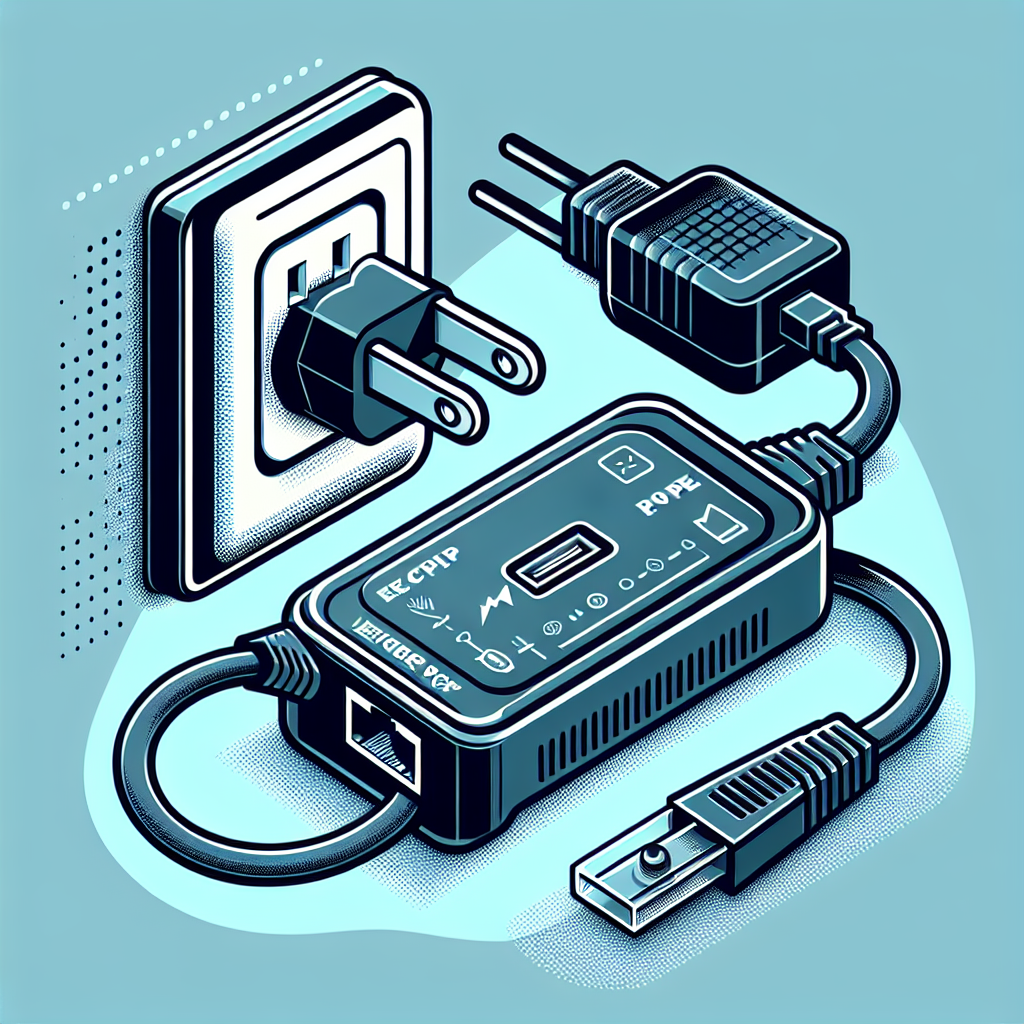What is a PoE (Power over Ethernet) network adapter?
In the evolving landscape of network infrastructure, Power over Ethernet (PoE) technology has emerged as a game-changer. It simplifies the installation of devices by providing both power and data over a single Ethernet cable. A key component in PoE systems is the PoE network adapter. But what exactly is a PoE network adapter, and how does it fit into modern networks?
Understanding PoE Network Adapters
A PoE network adapter is a device that enables the transmission of electrical power along with data to various network devices over Ethernet cables. This eliminates the need for separate power supplies and reduces the amount of wiring required for network installations.
There are several key components and technologies involved in PoE network adapters. The following table provides a snapshot of the main elements:
| Component | Description |
|---|---|
| PoE Injector | Devices that insert power into the Ethernet cable. |
| PoE Splitter | Devices that split data and power from an Ethernet cable to different lines. |
| PoE Switch | Network switches with built-in PoE capabilities to power multiple devices. |
| Powered Device (PD) | Any device that requires both power and data over Ethernet, like IP cameras or VoIP phones. |
How Does a PoE Network Adapter Work?
PoE network adapters function by adhering to specific standards, primarily the IEEE 802.3af and IEEE 802.3at (also known as PoE+). These standards define how power is delivered over Ethernet cables. The basic operational mechanics involve two main roles:
- Power Sourcing Equipment (PSE): Usually a PoE switch or injector that supplies power to the Ethernet cable.
- Powered Device (PD): The end device, which receives power and operates using it, such as wireless access points, security cameras, or VoIP phones.
In a typical PoE setup, the PSE sends power over the unused twisted pairs in the Ethernet cable. For Gigabit Ethernet and higher speeds, power can be delivered over all four pairs of wires because no pair is left unused.
Types of PoE Network Adapters
PoE network adapters come in various forms, tailored to different needs and functions. The primary types include:
PoE Injectors
These are used when a network switch doesn’t support PoE. A PoE injector works by inserting power into the Ethernet cable before it reaches the powered device. Injectors are commonly used for small setups or where PoE switches aren’t cost-effective.
PoE Splitters
PoE splitters are useful when the connected device doesn’t support PoE. A splitter divides the power and data into separate lines, providing power through a different cable while leaving the Ethernet cable for data transmission.
PoE Switches
These switches come with integrated PoE capabilities, providing both power and data directly to multiple devices through each port. They are ideal for larger network setups where numerous devices need to be powered over Ethernet.
Benefits of Using PoE Network Adapters
Implementing PoE network adapters offers numerous benefits, including:
- Simplified Installation: With PoE, fewer cables are needed, which reduces complexity and the amount of wiring required.
- Centralized Power Management: Power can be managed and controlled centrally, enabling uninterrupted power supply and easy monitoring.
- Cost Efficiency: Reduces the need for additional electrical infrastructure, lowering overall costs.
- Flexibility: Devices can be placed at distances up to 100 meters from the power source, which allows for greater placement flexibility.
- Safety: PoE is designed with safety in mind, ensuring low-voltage power delivery that reduces the risk of electrical hazards.
Applications of PoE Network Adapters
PoE technology is widely used in various industries and applications. Some of the notable applications include:
VoIP Phones
PoE provides a reliable power source for VoIP phones, ensuring uninterrupted communication within an organization.
Wireless Access Points
Installing wireless access points with PoE allows for seamless network expansion and easier installation in areas without existing power outlets.
IP Cameras
Security systems benefit greatly from PoE, as it allows for easy installation of cameras in locations without power infrastructure.
Building Management Systems
PoE is used to power devices in smart building management systems, like sensors and control panels, contributing to better energy management and automation.
Digital Signage
PoE simplifies the installation of digital signage and displays in commercial settings, providing power and data through a single cable.
Conclusion
A PoE network adapter is instrumental in modern networking by simplifying installations, lowering costs, and enabling more versatile network deployments. Whether it’s for powering VoIP phones, IP cameras, or wireless access points, PoE continues to be a vital technology for efficient and scalable network infrastructures.

